Your anti-static spray expires quickly because its active ingredients are highly sensitive to environmental conditions. Heat above 50°C/122°F, direct sunlight, and humidity can rapidly break down the quaternary ammonium compounds and other essential additives that prevent static. The solvents in the spray also evaporate over time, while UV exposure can create potentially harmful byproducts. You'll notice reduced effectiveness if you don't store the spray in a cool, dry, dark place with proper container seals. Temperature fluctuations and improper storage can cut your spray's lifespan substantially, but understanding proper storage methods can help extend its effectiveness.
Understanding Chemical Breakdown Over Time
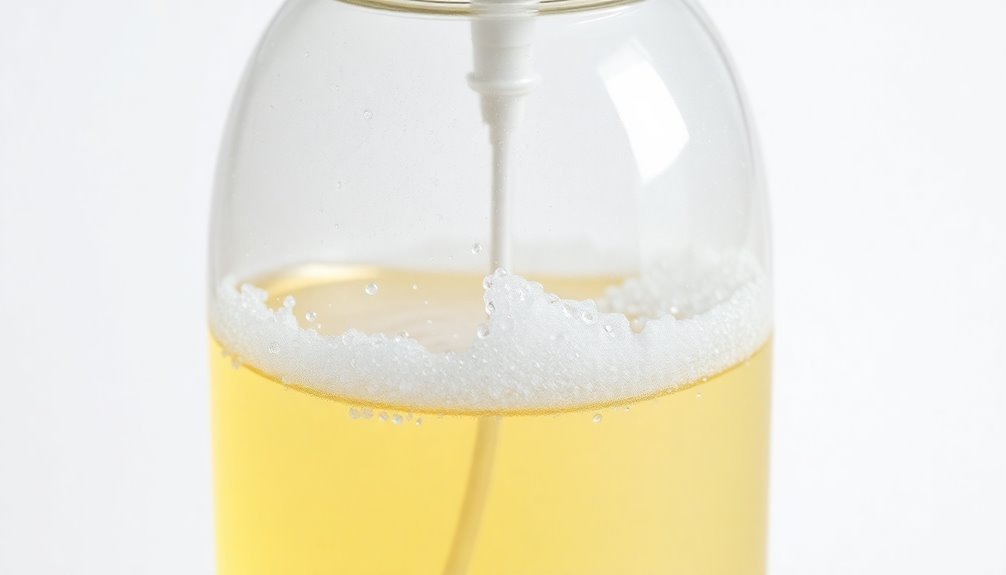
How do anti-static sprays lose their effectiveness over time? The primary chemical components, including quaternary ammonium compounds and ethyldimethyl alkyl et sulfates, naturally break down through various chemical reactions. When these active ingredients degrade, they can no longer effectively control static electricity, making your spray less reliable.
You'll notice this breakdown occurs faster when your spray is exposed to challenging environmental conditions. Heat accelerates chemical reactions that break down the active ingredients, while UV light can damage fluoropolymers and other essential additives. Showroom shine products are particularly vulnerable to these environmental factors.
If you're storing your anti-static spray in a humid environment, you're also risking hydrolysis, which can further compromise the product's effectiveness.
The presence of solvents and propellants in your spray can speed up this degradation process. These components interact with the active ingredients over time, potentially creating breakdown products that don't maintain the same anti-static properties.
You'll want to pay attention to your spray's container type too – if it's permeable or allows light exposure, it could be contributing to faster chemical breakdown. That's why manufacturers often use opaque containers to protect against UV degradation.
Storage Temperature Impact
For ideal performance and safety, storing your anti-static spray at the right temperature is crucial. You'll need to keep your products below 50°C/122°F, as exceeding this threshold can trigger rapid degradation of both the active ingredients and propellants.
It's especially important to protect pressurized containers from heat sources and direct sunlight.
Your anti-static spray's stability is most reliable when you maintain room temperature storage conditions. The fabric softener component helps prevent static buildup through mild conductivity. Products like Resque 2 Topical Antistat work best between 1°C/34°F and 49°C/120°F, while water-based solutions shouldn't be allowed to freeze.
You'll notice faster expiration if you're storing your spray in areas that experience temperature fluctuations or extreme conditions.
To protect your investment, don't keep anti-static sprays near heat sources, naked flames, or in direct sunlight. You'll want to choose a well-ventilated storage area that maintains a consistent temperature.
Remember that even brief exposure to high temperatures can impact the spray's effectiveness. By following these temperature guidelines and keeping your anti-static spray in its original container, you'll help maintain its stability and extend its useful life.
Light Exposure Effects
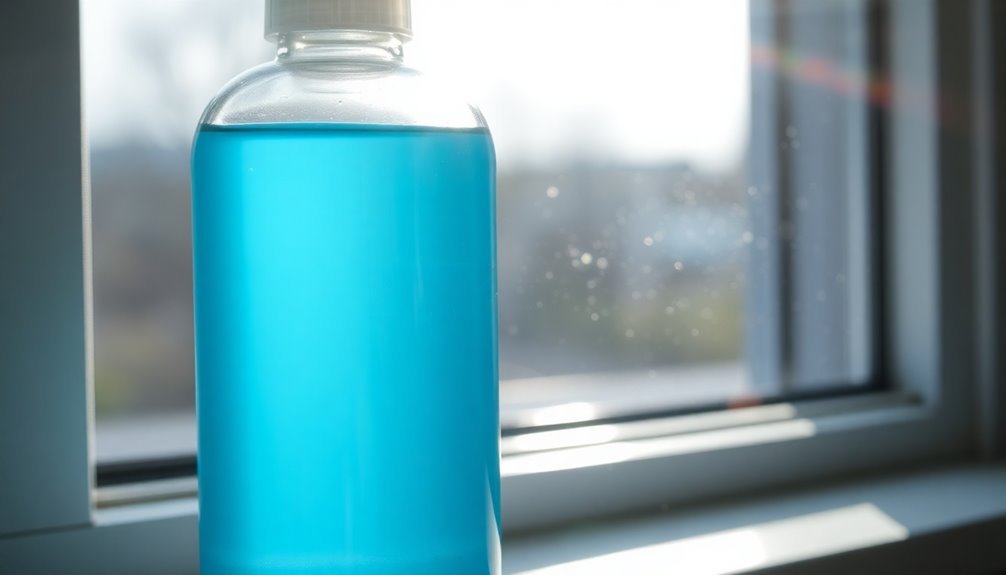
When exposed to light, particularly UV rays, anti-static sprays can rapidly deteriorate in both effectiveness and safety. UV radiation breaks down the active ingredients and solvents in the spray, compromising its ability to prevent static charges.
You'll notice this degradation through changes in the spray's color, consistency, or performance. Regular reapplication is often necessary even with proper storage, as the formula naturally loses potency over time.
Light exposure doesn't just reduce effectiveness; it can make your anti-static spray potentially hazardous. As the chemicals break down, they may form harmful byproducts that can irritate your skin and eyes or release dangerous gases when sprayed.
The degraded solution might also become more volatile, increasing fire risks if it's near ignition sources.
To protect your anti-static spray, you'll want to store it in a dark place away from direct sunlight. You should also inspect the spray regularly for signs of deterioration and always check the expiration date before use.
When you're using the spray, make sure you're in a well-ventilated area to avoid inhaling any fumes that might've formed due to light exposure. By following these precautions, you'll maintain the spray's effectiveness and guarantee your safety while using it.
Solvent Evaporation Issues
Understanding solvent evaporation in anti-static sprays can help you maximize their effectiveness and longevity. These sprays typically contain solvents like alcohol or deionized water that are designed to evaporate quickly, leaving behind a thin conductive film on surfaces to prevent static build-up.
Proper storage is essential in preventing excessive solvent evaporation. Keep your anti-static sprays at temperatures below 50°C and away from direct heat or naked flames. If you don't store them correctly, you'll notice a significant reduction in their effectiveness over time, as the solvent composition begins to deteriorate. For optimal results, maintain ambient temperature storage conditions.
The shelf life of your anti-static spray can vary from 2 to 6 years, depending on how you store and handle it. You'll want to avoid overapplication and guarantee adequate ventilation when using the product.
The type of surface you're treating can also impact how long the spray remains effective. Remember that the product's formulation, including non-flammable and biodegradable solvents, plays a critical role in its longevity.
Water Content Changes
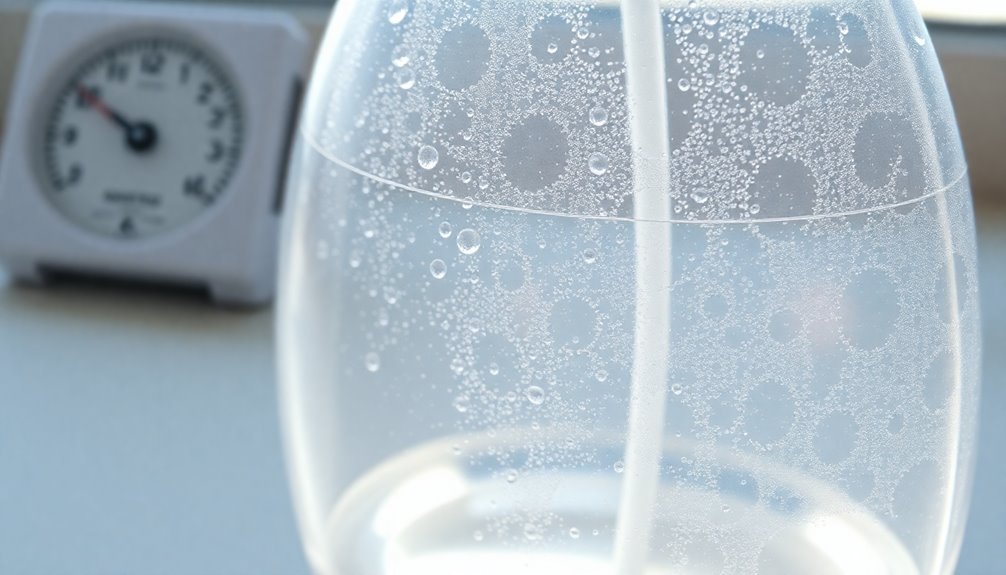
Water content in your anti-static spray changes substantially as the solution evaporates over time, leading to a less effective product.
You'll notice the spray's performance diminish as water loss disrupts the careful balance of ingredients needed for static control.
The surrounding humidity levels can further impact this balance, either accelerating evaporation in dry conditions or diluting the solution in highly humid environments.
Since relative humidity above 40% helps dissipate static charges naturally, the water content changes in anti-static sprays become even more critical for maintaining effectiveness.
Water Evaporation Over Time
Over time, anti-static spray solutions gradually lose their effectiveness as water content changes through evaporation. You'll notice this process accelerates when you store your anti-static spray in warmer environments, as temperature directly affects the evaporation rate. When water evaporates from the solution, it disrupts the careful balance of active ingredients needed for static control. The process requires 539 calories per gram of water to vaporize, explaining why even sealed bottles can experience gradual content changes.
Several environmental factors determine how quickly your anti-static spray's water content changes:
| Factor | Effect | Prevention |
|---|---|---|
| Temperature | Higher temps speed up evaporation | Store in cool place |
| Humidity | Low humidity increases water loss | Keep in moderate humidity |
| Air Flow | More airflow accelerates evaporation | Keep container sealed |
| Pressure | Lower pressure increases evaporation | Store at normal pressure |
| Light Exposure | UV can increase evaporation | Store away from sunlight |
The water content's stability is vital because it affects the spray's ability to maintain proper conductivity. When you're using the product, you'll want to monitor signs of concentration changes, such as decreased performance or changes in spray pattern. Once the water content drops below ideal levels through evaporation, the solution won't effectively combat static electricity, making the product expire faster than its intended shelf life.
Humidity Affects Solution Balance
Environmental humidity plays a critical role in your anti-static spray's effectiveness by directly influencing its water content balance. When you store your spray in areas with fluctuating humidity levels, the solution's stability becomes compromised.
High relative humidity (RH) can cause your anti-static spray to absorb excess moisture from the air, while low RH might lead to increased evaporation, throwing off the carefully balanced formula. Non-permeable barriers can help protect against these humidity fluctuations.
Your indoor environment's daily activities and seasonal changes directly impact the humidity levels affecting your spray. You'll notice faster degradation if you're storing the product in naturally humid areas like bathrooms or basements.
The temperature also plays an essential role – warmer air holds more moisture, potentially accelerating the solution's breakdown.
To maintain your anti-static spray's effectiveness longer:
- Store in climate-controlled areas with RH between 40-60%
- Keep away from bathrooms, kitchens, and other high-moisture areas
- Use proper ventilation where you store the product
- Consider using local dehumidifiers in storage spaces during humid seasons
Understanding these humidity factors helps you protect your anti-static spray's chemical balance and extend its useful life through proper storage conditions.
Active Ingredient Degradation
Anti-static spray ingredients hold up remarkably well under normal conditions, maintaining their chemical stability without hazardous decomposition or polymerization. However, you'll notice degradation if you expose these products to excessive heat for prolonged periods or store them improperly.
The active ingredients begin to break down when you don't maintain proper storage conditions. You'll want to keep your anti-static spray in a dry, cool, and well-ventilated area to maximize its shelf life, which can extend up to 6 years for products like Ambersil. Most manufacturers recommend re-applying every month to maintain optimal performance.
The solution's pH balance, typically between 7 and 9, plays a vital role in maintaining stability, but this balance can shift if you expose the product to incompatible substances like strong oxidizing agents.
While ingredients like 2-Butoxyethanol are biodegradable, their breakdown can affect the spray's effectiveness. You'll know your anti-static spray is degrading when it loses its ability to prevent static buildup effectively.
To prevent premature degradation, you should avoid storing the product in areas with temperature fluctuations, direct sunlight, or high humidity, as these conditions can accelerate the breakdown of active ingredients.
Container Integrity Matters

Your anti-static spray's container seals can break down with age, potentially letting air and moisture seep into the pressurized contents.
You'll notice this deterioration when the spray becomes less effective or the container feels lighter than it should, indicating that the pressurized contents have gradually escaped.
When storing your anti-static spray, you'll want to check the container regularly for signs of seal wear and guarantee it's kept in a cool, dry place to slow down seal degradation.
Seal Deterioration Over Time
Proper seal integrity remains critical for maintaining the effectiveness and safety of anti-static spray products. When seals deteriorate, they'll compromise both the container's integrity and the spray's performance.
You'll find that chemical reactions between the spray's components and seal materials often accelerate this deterioration, especially when exposed to challenging environmental conditions like heat and moisture.
Your anti-static spray's seal can break down faster than you'd expect, particularly if you're not following proper storage and handling guidelines. The chemicals within the spray continuously interact with the seal material, potentially causing erosion and weakening the protective barrier that keeps the product safely contained.
- Check your spray container's seals regularly for signs of wear, discoloration, or damage
- Store containers upright to minimize chemical contact with seals and reduce gravity-induced pressure
- Keep sprays in temperature-controlled environments away from direct sunlight to prevent accelerated seal degradation
- Replace containers showing any signs of seal compromise, as they're no longer safe to use or store
Understanding seal deterioration helps you maintain your anti-static spray's effectiveness and prevent potential leaks or product failures that could compromise your static control measures.
Pressurized Contents Escape Gradually
Pressurized containers holding anti-static spray will gradually lose their contents over time, even when they appear perfectly sealed. This occurs due to several material integrity factors that affect the container's ability to maintain pressure.
Material fatigue plays a significant role, as the container experiences stress from regular use and environmental conditions.
The container's valve system is particularly vulnerable to defects and wear, which can create microscopic pathways for the pressurized contents to escape. If you're storing your anti-static spray in areas with temperature fluctuations or high humidity, you're accelerating this process.
These environmental conditions cause the container materials to expand and contract, potentially compromising the seal integrity.
Even if you're careful with handling, the container's materials naturally degrade over time. The quality of the container construction, including wall thickness and valve design, determines how long it can effectively maintain pressure.
You'll notice this gradual loss through decreased spray effectiveness and a lighter feel to the container. That's why it's crucial to check your anti-static spray regularly for signs of pressure loss and consider replacing it before it becomes ineffective.
Best Storage Practices
For best performance and safety, anti-static spray requires careful storage following specific guidelines. You'll need to maintain proper temperature control, keeping the spray below 122°F and away from direct sunlight.
A well-ventilated, dry storage area will help prevent container deterioration and maintain product effectiveness.
Always store your anti-static spray in its original container with a tight seal, positioned upright to prevent leakage. You'll want to keep it away from any ignition sources, including naked flames, and verify it's separate from incompatible materials, food, and animal feed.
- Keep containers away from heat sources and maintain temperatures below 122°F
- Store in a well-ventilated area with proper fire protection equipment nearby
- Check regularly for signs of container damage or leakage
- Keep containers sealed, upright, and in their original packaging
In case of spills, you'll need to use absorbent materials like vermiculite or dry sand for containment. Don't forget to familiarize yourself with local disposal regulations, as aerosol cans require special handling.
Remember to keep the spray inaccessible to children and unauthorized personnel, and maintain clear labeling on all containers.
Signs of Expired Spray
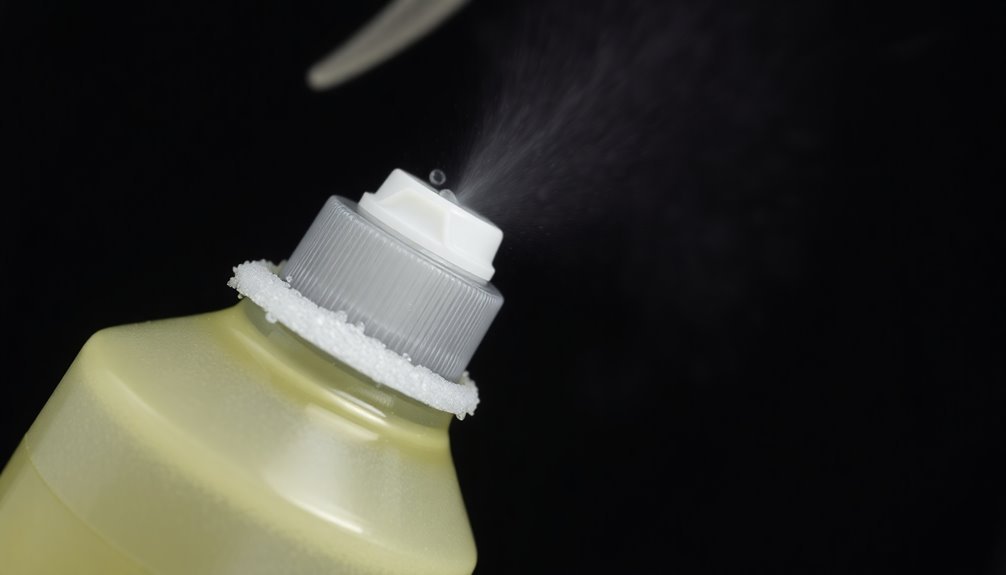
When your anti-static spray expires, several telltale signs will alert you to its deteriorating condition. You'll notice chemical changes like a shift from a sweet, alcohol-like scent to an unpleasant odor, and the once-clear solution may become discolored.
The spray's effectiveness in neutralizing static charges will substantially decrease, requiring multiple applications to achieve the desired effect.
Physical changes in the aerosol can itself serve as clear indicators. Look for rust, corrosion, or any distortion in the can's shape. If you observe cracks in the container or nozzle, or if the spray pressure becomes inconsistent, it's time to replace the product. You might also notice sediment forming inside the container.
Performance issues will become increasingly apparent when using expired anti-static spray. You'll find it harder to achieve an even coating, and the spray may leave unwanted residue or streaks on surfaces.
The product's ability to inhibit dust accumulation will diminish, and static charges will take longer to dissipate. Most importantly, using expired anti-static spray increases the risk of electrostatic discharge damage to sensitive equipment.
Frequently Asked Questions
Can Expired Anti-Static Spray Damage Electronic Components?
No, expired anti-static spray won't directly damage your electronics, but it won't protect them either. You'll be at risk for static electricity damage since the spray isn't effectively neutralizing electrostatic charges anymore.
How Does Humidity Affect the Shelf Life of Anti-Static Spray?
High humidity can shorten your anti-static spray's shelf life by altering its chemical composition. You'll notice it degrades faster when stored in humid conditions, so it's best to keep it in cool, dry places.
Is It Safe to Use Anti-Static Spray After the Expiration Date?
While you can use expired anti-static spray, it's not recommended since its effectiveness may be reduced. If properly stored, it's generally safe, but you won't get optimum performance compared to using fresh product.
Does Frequent Opening and Closing Reduce the Spray's Effectiveness?
Yes, when you frequently open and close your anti-static spray, you'll reduce its effectiveness. Each opening exposes the contents to air, leading to contamination risks and chemical degradation of the formula's active ingredients.
Can Anti-Static Spray Be Stored in the Refrigerator to Extend Life?
You shouldn't store anti-static spray in the refrigerator. It won't extend shelf life and could cause chemical instability. Cold temperatures may alter the spray's composition and effectiveness, while pressurized cans pose safety risks.
In Summary
You'll find that proper storage is essential to extending your anti-static spray's lifespan. Keep it in a cool, dark place with a tightly sealed cap to prevent solvent evaporation and chemical breakdown. Don't let it sit in direct sunlight or high temperatures, as these conditions speed up degradation. When your spray starts losing effectiveness or smells different, it's time for a replacement.

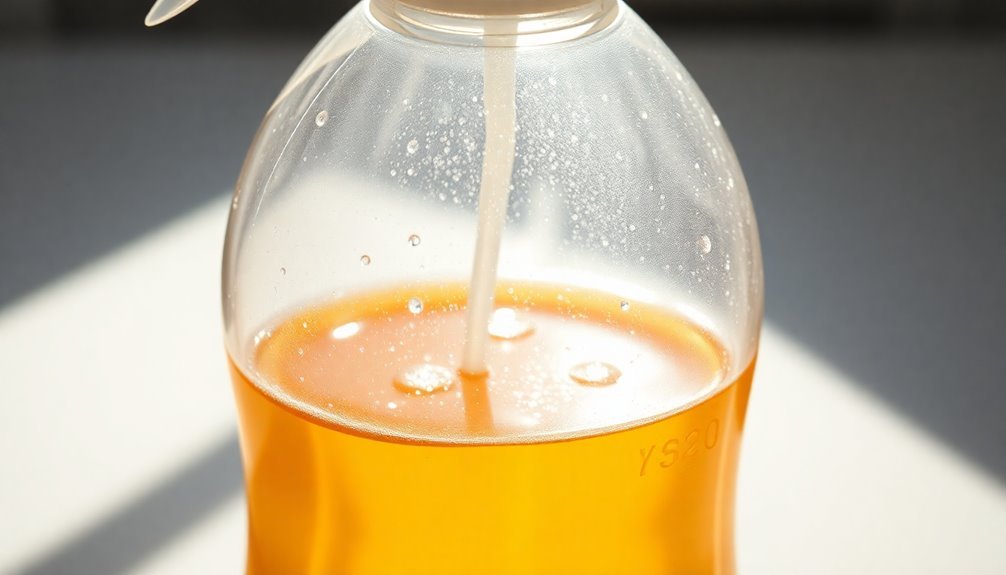



Leave a Reply